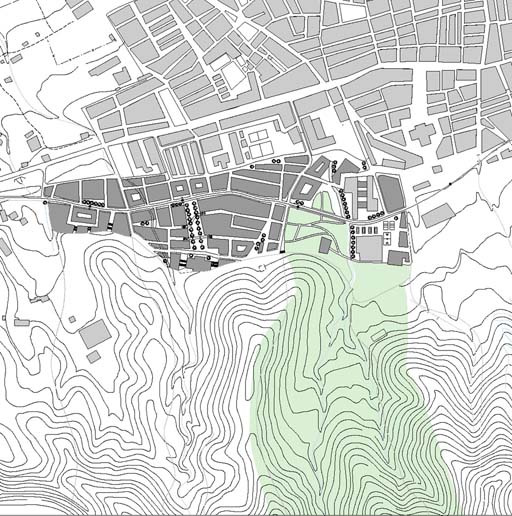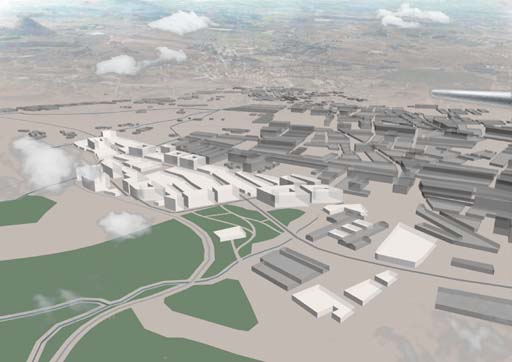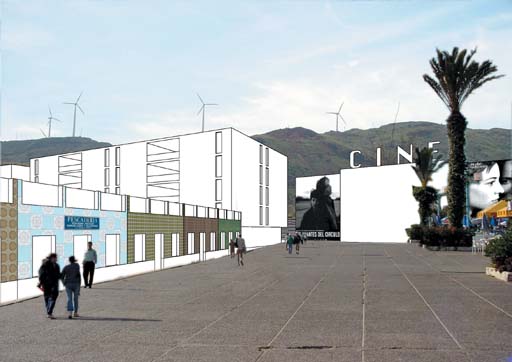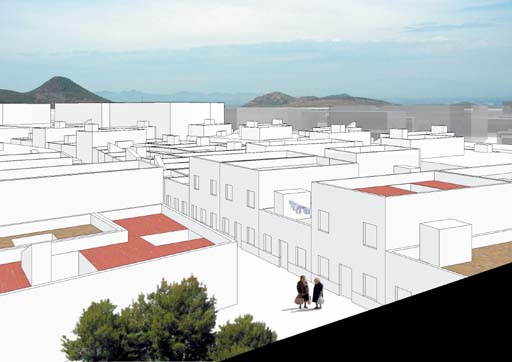Ciudad Espejo
La Union - Europan 7
Collaboration with Margarita Salmeron Espinosa and Christoph Schindler


1. copy 2. mirror 3. search 4. fix
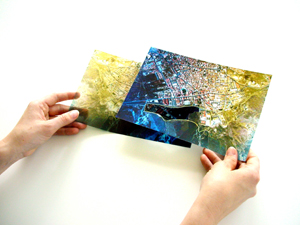

A mining landscape
The municipality of La Union offers one of the most picturesque and
specific landscapes in the region of Murcia.
The extreme topographic change from flatlands into hills so short before the Mediterranean is spectacular, this range
separating the town from the Mediterranean is an unbeatable landmark. The morphology of the mines is very
attractive; a constellating of similar looking peaks and chopped off mountains
with a powerful combination of colours and a mineral and metal appearance,
giving as a result an impressive view.
This picture is the result of a long economic interrelation between landscape and man. Human work and mining techniques have made unnaturally fast changes along the centuries in the landscape.
The pragmatic use of
the mineral resources was the target, and re-use
of the mining waste the technique: Excavated ground dropped as artificial
mountains by one generation was used by the next one to look for another
material. So the waste mountains of the ancestors were re-mined and re-mined,
every time with another target:
Phoenicians looking for silver, produced mountains. Carthaginians looking for
silver, with new techniques, in the Phoenician mountains, producing mountains.
Romans looking for silver in the Carthaginian mountains, producing mountains.
19th century Spanish looking for lead in the Roman mountains, producing
mountains. 20th century Spanish looking for iron in their mountains, producing
mountains till 1913.
Learning from the
mines
Could this recycling attitude be a principle applicable to urban planning?
Could the existing urban material of La Union be valuable to re-use it for a
new plan? Can the existing be the basis of the future? The existing city of La Union is the result of an organic
growing process over hundreds of years. How can we reach the same quality in a
relatively short period of time?
Europan 7
The plot to develop is placed in an extraordinary position respect to the
landscape as well as within the town.
Applying the recipe from the mines we looked into the existing town for a piece
of city that would contain enough potential to become the basis for the new
plan and to which apply the technique: COPY from the existing >ADAPT the
existing to the plot and its pre-existences> IMPROVE its qualities through
actual urban and architectonic techniques.
Copy from the
existing
We isolated a representative area of the existing city within its urban tissue,
which contains all required features to become a new neighbourhood: a paseo,
the tissue of narrow streets and the traditional housing typologies. These
traditional features have proved through history to fulfil the ecological,
social, climatic and cultural standards of the area, and respond perfectly to
the required urban calculations of the competition, 0.6 m2 construction / m2
ground.
Adapting to the
existing
The open space between the existing mining remains is "filled" with
city. This implanted footprint is confronted with existing values like rivers,
forest and existing buildings, which add value to the implanted tissue.
The copied tissue, once implanted in the new area, as been enriched by the
contact with the existing streams and pine forest.
As well, in order to connect the existing city with its extension, we move the
existing tramline to the middle of the new district, which helps melting the
operation with the neighbour buildings, and the section can be developed like
in any other city with tram.
Improve its
qualities
Would inventing new typologies or trying to integrate alien parameters to the
town add to it an extra value? Can we develop a novelty that is as effective as
the types depurated through centuries of history? Can we just rethink the existing?
With the technique of re-think the existing, we want to understand which are
the values of the existing types, emphasize their qualities and cleaning them
from obstructions, so they can perform their best qualities and prove that La
Union has - as well as the mines - enough power and material inside to
initialize its own future.
